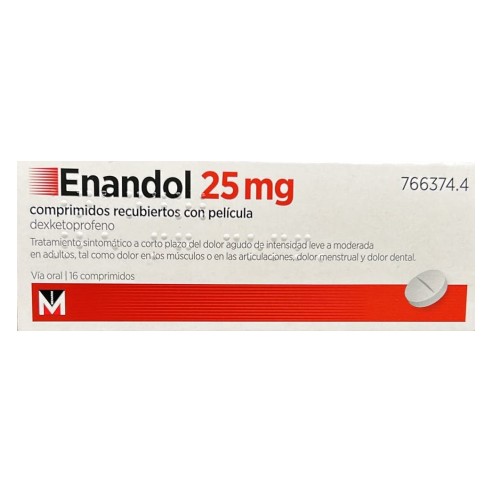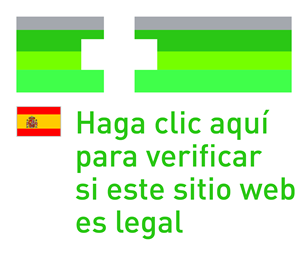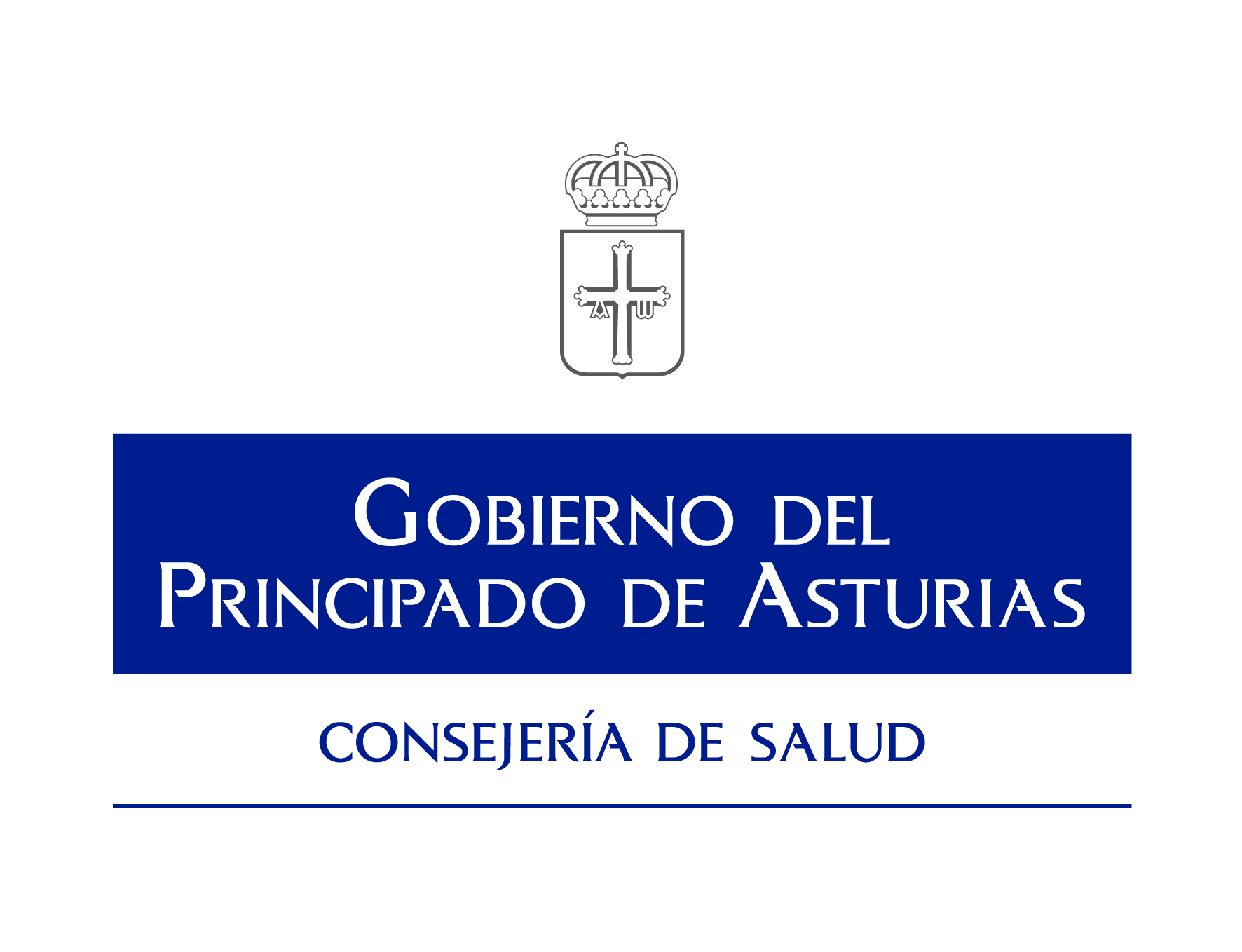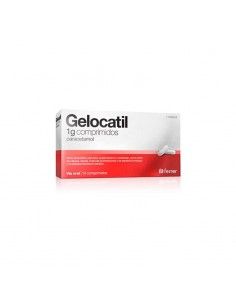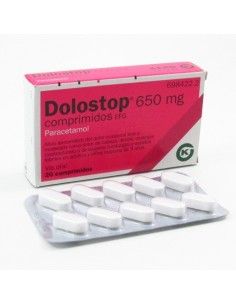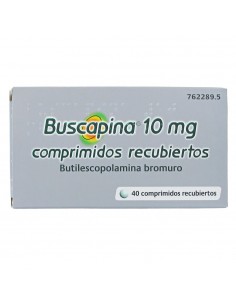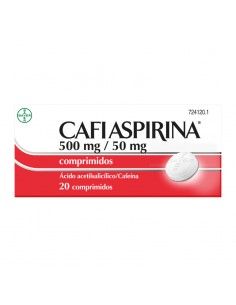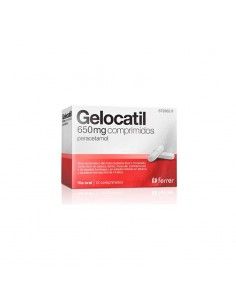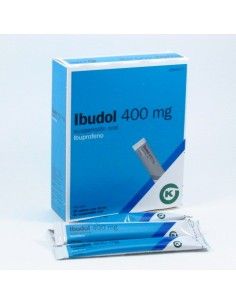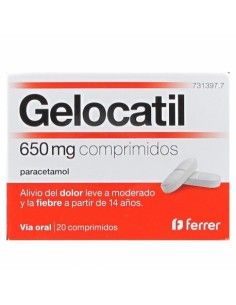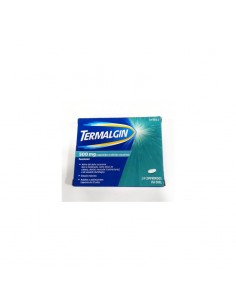Enandol 25 mg 16 Coated Tablets
1. What Enandol is and what it is used for: This medicine is an analgesic belonging to the group of medicines known as non-steroidal anti-inflammatory drugs (NSAIDs).
Enandol is used in adults for the short-term symptomatic treatment of mild to moderate acute pain, such as muscle or joint pain (such as back pain, sprains and acute trauma), menstrual pain and toothache.
2. What you need to know before you take Enandol
Do not take Enandol:
- If you are allergic to dexketoprofen or any of the other ingredients of this medicine (listed in section 6);
- If you are allergic to acetylsalicylic acid or another non-steroidal anti-inflammatory drug;
- If you have asthma or have suffered asthma attacks, acute allergic rhinitis (a short period of inflammation of the nasal mucosa), nasal polyps (fleshy formations inside the nose due to allergy), urticaria (rash on the skin), angioedema (swelling of the face, eyes, lips or tongue, or difficulty breathing) or wheezing in the chest after having taken acetylsalicylic acid or other non-steroidal anti-inflammatory drugs;
- If you have suffered photoallergic or phototoxic reactions (a special form of reddening or burning of the skin exposed to sunlight) while taking ketoprofen (a non-steroidal anti-inflammatory drug) or fibrates (medicines used to reduce blood fat levels);
- If you have a peptic ulcer, stomach or intestinal bleeding or if you have suffered in the past from stomach or intestinal haemorrhage, ulceration or perforation;
- If you have chronic digestive problems (e.g. indigestion, heartburn);
- If you have suffered from stomach or intestinal bleeding or perforation in the past, due to previous use of non-steroidal anti-inflammatory drugs (NSAIDs) used for pain;
- If you have chronic inflammatory bowel disease (Crohn's disease or ulcerative colitis);
- If you have severe heart failure, moderate to severe kidney failure or severe liver failure;
- If you have bleeding disorders or blood clotting disorders;
- If you are severely dehydrated (have lost a lot of body fluid) due to vomiting, diarrhoea or insufficient fluid intake;
- If you are in the third trimester of pregnancy or breastfeeding.
Warnings and precautions
Consult your doctor or pharmacist before starting to take Enandol:
- - If you are allergic or have had allergy problems in the past;
- If you have kidney, liver or heart disease (hypertension and/or heart failure), or fluid retention or have suffered from any of these conditions in the past;
- If you are taking diuretics or have insufficient hydration and reduced blood volume due to excessive fluid loss (for example, due to excessive urination, diarrhoea or vomiting);
- If you have heart problems, a history of stroke, or think you might be at risk of these conditions (for example, if you have high blood pressure, diabetes, high cholesterol, or if you smoke), you should discuss this treatment with your doctor or pharmacist. Medicines like Enadol may be associated with a small increased risk of heart attacks (‘myocardial infarctions’) or strokes. Any risk is more likely to occur when high doses and prolonged treatment are used. Do not exceed the recommended dose or duration of treatment;
- If you are an elderly patient, you may experience a higher incidence of adverse effects (see section 4). If these occur, consult your doctor immediately;
- If you are a woman with fertility problems (see section 2, ‘Pregnancy, lactation and fertility’);
- If you suffer from a disorder in the production of blood and blood cells;
- If you have systemic lupus erythematosus or mixed connective tissue disease (immune system diseases that affect the connective tissue);
- If you suffer or have suffered in the past from chronic inflammatory bowel disease (ulcerative colitis, Crohn's disease);
- If you suffer or have suffered in the past from stomach or intestinal disorders;
- If you have an infection; see the heading ‘Infections’ below;
- If you are taking other medications that increase the risk of peptic ulcer or bleeding, for example, oral corticosteroids, some antidepressants (of the SSRI type, Selective Serotonin Reuptake Inhibitors), agents that prevent the formation of blood clots such as acetylsalicylic acid (aspirin) or anticoagulants such as warfarin. In these cases, consult your doctor before taking this medicine: your doctor may prescribe an additional medicine to protect your stomach (for example, misoprostol or other medicines that block the production of gastric acid);
- If you suffer from asthma, combined with rhinitis or chronic sinusitis, and/or nasal polyps, as you have a higher risk of having an allergy to acetylsalicylic acid and/or NSAIDs than the rest of the population. Taking this medicine can cause asthma attacks or bronchospasm, particularly in patients allergic to acetylsalicylic acid or NSAIDs.
Infections
Enandol can hide the signs of an infection, such as fever and pain. Therefore, it is possible that this medicine delays the appropriate treatment of the infection, which can increase the risk of complications. This has been observed in pneumonia caused by bacteria and in bacterial skin infections related to chickenpox. If you are taking this medicine while you have an infection and the symptoms of the infection persist or worsen, consult a doctor without delay.
Avoid using this medicine if you have chickenpox.
Children and adolescents
This medicine has not been studied in children or adolescents. Therefore, its safety and efficacy have not been established and it should not be used in children or adolescents.
Using Enandol with other medicines
Tell your doctor or pharmacist if you are taking or have recently taken or might have to use any other medicines, including those acquired without a prescription. There are some medicines that should not be taken together and other medicines that may require a change of dose if taken together.
Always tell your doctor, dentist or pharmacist if, in addition to this medicine, you are taking any of the following medicines:
Unrecommended combinations:
- Acetylsalicylic acid, corticosteroids and other anti-inflammatories;
- Warfarin, heparin and other drugs used to prevent the formation of clots;
- Lithium, used to treat some mood disorders;
- Methotrexate (cancer and immunosuppressant drug), used at high doses of 15mg/week;
- Hydantoins and phenytoin, used for epilepsy;
- Sulfamethoxazole, used for bacterial infections.
Associations that require caution:
- ACE inhibitors, diuretics and angiotensin II antagonists, used to control high blood pressure and heart disorders;
- Pentoxifylline and oxpentifylline, used to treat chronic venous ulcers;
- Zidovudine, used to treat viral infections;
- Aminoglycoside antibiotics, used to treat bacterial infections;
- Sulphonylureas (e.g. chlorpropamide and glibenclamide), used to treat diabetes;
- Methotrexate, used at low doses, less than 15 mg/week.
Associations to be taken into account:
- Quinolones (for example, ciprofloxacin, levofloxacin) used for bacterial infections;
- Ciclosporin or tacrolimus, used to treat diseases of the immune system and in organ transplants;
- Streptokinase and other thrombolytic and fibrinolytic drugs, i.e. drugs used to break up blood clots;
- Probenecid, used for gout;
- Digoxin, used in the treatment of chronic heart failure;
- Mifepristone, used as an abortifacient (for the termination of pregnancy);
- Antidepressants of the Selective Serotonin Reuptake Inhibitor (SSRI) type;
- Antiplatelet agents used to reduce platelet aggregation and the formation of clots;
- - Beta-blockers, used for high blood pressure and cardiac disorders;
- - Tenofovir, deferasirox, pemetrexed.
If you have any doubts about taking other medicines with Enadol, consult your doctor or pharmacist.
Taking Enadol with food, drink and alcohol
In general, it is recommended to take the medicine with meals to reduce the possibility of causing stomach upset (see also section 3, ‘Method of administration’).
The use of NSAIDs in combination with alcohol can worsen the adverse reactions caused by the active ingredient.
Pregnancy, breast-feeding and fertility
Do not take this medicine during the last three months of pregnancy or while breast-feeding. It can cause kidney and heart problems in your unborn child. It can affect your and your baby's tendency to bleed and delay or prolong labour.
You should not take Enandol during the first 6 months of pregnancy unless it is clearly necessary and as directed by your doctor. If you need treatment during this period or while trying to get pregnant, you should take the minimum dose for the shortest possible time.
From the 20th week of pregnancy, Enandol can cause kidney problems in your foetus if it is taken for more than a few days, which can lead to low levels of amniotic fluid surrounding the baby (oligohydramnios) or narrowing of a blood vessel (ductus arteriosus) in the baby's heart. If you need treatment for more than a few days, your doctor may recommend additional monitoring.
Use of this medicine may affect fertility, so it is not recommended that you use this medicine while trying to conceive or while investigating a problem of infertility.
Driving and using machines
This medicine may slightly affect your ability to drive and use machines, as it can cause drowsiness, dizziness and blurred vision as adverse effects of the treatment. If you notice these effects, do not use machines or drive until these symptoms disappear. Ask your doctor for advice.
Enandol contains sodium
This medicine contains less than 23 mg of sodium (1 mmol) per tablet; that is, it is essentially ‘sodium-free’.
3. How to take Enandol Follow exactly the instructions for use of the medicine contained in this leaflet or those indicated by your doctor or pharmacist. If in doubt, ask your doctor or pharmacist.
The required dose of the medicine can vary depending on the type, intensity and duration of the pain.
The lowest effective dose should be used for the shortest time necessary to relieve symptoms. If you have an infection, consult a doctor promptly if symptoms (such as fever and pain) persist or worsen (see section 2).
The tablets can be divided into equal doses.
Adults over 18 years of age
In general, the recommended dose is 1 tablet (25 mg dexketoprofen) every 8 hours, without exceeding 3 tablets a day (75 mg).
Elderly patients or patients with renal or hepatic impairment
If you are an elderly patient, or suffer from mild kidney problems or mild to moderate liver problems, it is recommended that you start treatment with a maximum of 2 tablets per day (50 mg dexketoprofen).
In elderly patients, this initial dose can be increased later according to the general recommended dose (75 mg dexketoprofen) if dexketoprofen has been well tolerated.
You should not use dexketoprofen if you suffer from moderate or severe kidney problems, or severe liver problems. Consult your doctor or pharmacist if you are unsure.
Use in children and adolescents
This medicine should not be used in children and adolescents (under 18 years of age).
Method of administration
Take the tablets with a suitable amount of water.
The medicine can be taken with or without food. Taking the medicine with food helps to reduce the risk of stomach upset, however if your pain is more intense and you need faster relief, take the tablet on an empty stomach (at least 30 minutes before any food or drink) because it will be absorbed more easily (see section 2 ‘Taking Enandol with food, drink and alcohol’).
Duration of treatment
Treatment should not last more than 4 days. If the pain persists after this period of time, worsens or other symptoms appear, you should stop treatment and consult your doctor or pharmacist.
If you take more Enandol than you should
Consult your doctor or pharmacist immediately or call the Toxicology Information Service on 91 562 04 20, indicating the medicine and the amount taken. It is recommended that you take the container and the medicine leaflet to the healthcare professional.
If you forget to take Enandol
Do not take a double dose to make up for a forgotten dose. Take the next dose when appropriate (according to section 3 ‘How to take Enandol’).
If you have any questions about the use of this medicine, ask your doctor or pharmacist.
4. Possible side effects Like all medicines, this medicine can cause side effects, although not everybody gets them.
The possible side effects are detailed below according to how frequently they occur.
Common side effects (may affect up to 1 in 10 people):
Nausea and/or vomiting, mainly pain in the upper abdominal quadrant, diarrhoea, digestive disorders (dyspepsia).
Uncommon side effects (may affect up to 1 in 100 people):
Rotational sensation (vertigo), dizziness, drowsiness, sleep disorders, nervousness, headache, palpitations, hot flushes, inflammation of the stomach wall (gastritis), constipation, dry mouth, flatulence, skin rash, fatigue, pain, feverish sensation and chills, general malaise.
Rare adverse effects (may affect up to 1 in 1,000 people):
peptic ulcer, perforation of peptic ulcer or bleeding (which may manifest as vomiting blood or black stools), fainting, high blood pressure, slow breathing, fluid retention and peripheral swelling (e.g. swelling of the ankles), laryngeal oedema, loss of appetite (anorexia), abnormal sensation, itchy rash, acne, increased sweating, lower back pain, frequent urination, menstrual disorders, prostate disorders, abnormal liver function tests (blood tests), liver cell damage (hepatitis), acute renal failure.
Very rare (can affect up to 1 in 10,000 people):
anaphylactic reaction (hypersensitivity reaction that can also lead to collapse), ulcers on the skin, mouth, eyes and genital areas (Stevens Johnson syndrome and Lyell syndrome), swelling of the face or swelling of the lips and throat (angioedema), difficulty breathing due to narrowing of the airways (bronchospasm), shortness of breath, tachycardia, low blood pressure, inflammation of the pancreas, blurred vision, ringing in the ears (tinnitus), sensitive skin, sensitivity to light, itching, kidney problems. Decrease in the number of white blood cells (neutropenia), decrease in the number of platelets (thrombocytopenia).
Inform your doctor immediately if you notice any gastrointestinal adverse effects at the start of treatment (for example, stomach pain or burning or bleeding), if you have previously suffered from any of these adverse effects due to prolonged treatment with anti-inflammatories, and especially if you are elderly.
Stop taking this medicine immediately if you notice the appearance of a skin rash or any lesion inside the mouth or on the genitals, or any other sign of allergy.
During treatment with non-steroidal anti-inflammatory drugs, cases of fluid retention and swelling (especially in the ankles and legs), increased blood pressure and heart failure have been reported.
Medicines such as Enadol may be associated with a small increased risk of heart attack (‘myocardial infarction’) or stroke.
In patients with immune system disorders affecting connective tissue (systemic lupus erythematosus or mixed connective tissue disease), anti-inflammatory drugs may rarely cause fever, headache and neck stiffness.
The most commonly observed adverse effects are gastrointestinal. Peptic ulcers, perforation or gastrointestinal bleeding, sometimes fatal, can occur, especially in elderly patients.
After administration, nausea, vomiting, diarrhoea, flatulence, constipation, dyspepsia, abdominal pain, melena, haematemesis, ulcerative stomatitis, worsening of colitis and Crohn's disease have been reported. Less frequently, inflammation of the stomach wall (gastritis) has been observed.
As with other NSAIDs, haematological reactions (purpura, aplastic and haemolytic anaemia, and more rarely agranulocytosis and medullary hypoplasia) may occur.
Reporting of adverse reactions
If you experience any side effects, talk to your doctor, pharmacist or nurse. This includes any possible side effects not listed in this leaflet. You can also report side effects directly via the Spanish Pharmacovigilance System for Medicines for Human Use: www.notificaRAM.es.
By reporting side effects you can help provide more information on the safety of this medicine.
5. Storage of Enandol Keep this medicine out of the sight and reach of children.
Do not use this medicine after the expiry date which is stated on the pack and on the blister after EXP. The expiry date refers to the last day of that month.
Do not store above 30ºC. Keep the blister in the original pack to protect from light.
Medicines should not be disposed of down drains or in the trash. Dispose of containers and medicines you no longer need at the SIGRE point in your pharmacy. If in doubt, ask your pharmacist how to dispose of containers and medicines you no longer need. This way, you will help protect the environment.
6. Package contents and additional information Composition of Enandol
- The active ingredient is dexketoprofen (as dexketoprofen trometamol). Each tablet contains 25 mg of dexketoprofen.
- The other ingredients are:
Tablet core: corn starch, microcrystalline cellulose, sodium carboxymethyl starch (Type A) (potato starch), glycerol distearate.
Coating of the tablet: dry lacquer composed of: hypromellose, titanium dioxide and macrogol 6000, and propylene glycol (E-1520).
Appearance of Enandol and contents of the pack
White, round, scored film-coated tablets.
Available in packs containing 10 and 16 film-coated tablets.
The tablets are presented in blister packs (PVC-aluminium blister packs).

